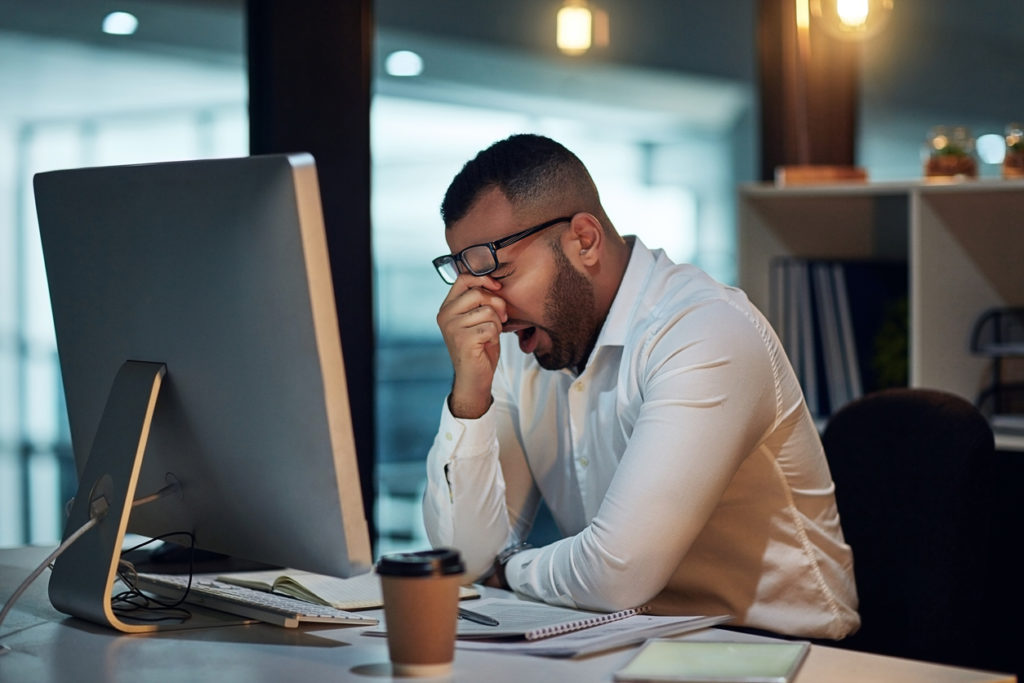
Articles
SleepScore at the ATN Innovation Summit 2025: Why Sleep Drives Everything
Reimagining The World of Sleep SleepScore Labs was proud to take part in the ATN Innovation Summit 2025, an elite gathering…
Introducing SleepScore
We deliver accurate data, actionable insights, personalized coaching and proven outcomes your customers need.
Sleep Insights
Last Published on 2nd May 2019 by SleepScore Labs

What exactly is sleep apnea? The word “apnea” literally means “no breath” or “stopping breathing”. And it’s actually much more common than you’d expect. In fact, about 24 percent of men and nine percent of women have the breathing symptoms of OSA with or without daytime sleepiness.
Sleep apnea occurs when a person’s breathing is interrupted during sleep. Partial disruptions to breath are known as hypopneas, and full cessations of breathing are known as apneas. These breathing interruptions can be extremely brief or can last for several seconds and is one of the causes of snoring in your sleep (a situation where an anti snoring mouth guard might be useful). The severity of sleep apnea is commonly measured by the number of breathing interruptions occurring in an hour of sleep. Mild sleep apnea includes at least five episodes of interrupted breathing during an hour, while more severe forms of sleep apnea can consist of 30 or more episodes.
Those who have sleep apnea often have one or more of these health traits:
These characteristics can also increase your risk of sleep apnea:
If you want to find out if you might be at a heightened risk for sleep apnea, checkout the free SleepScore App. Track your sleep using just your smartphone and if SleepScore’s advanced algorithms detect atypical sleep patterns, SleepScore will send you a clinically validated screener to determine your risk level for sleep apnea or other possible sleep disorders.
Untreated sleep apnea can result in a variety of health concerns that should be taken seriously. These can include:
Learning about sleep apnea and its risks can be scary. But there’s some good news too! Effective treatments options are available that can remedy the breathing problems that interfere with sleep.
Lifestyle: These treatments can reduce the health risks linked to sleep apnea, and bring a return to high quality, refreshing sleep. For some people, shifting positions for sleep can help alleviate breathing difficulties, including sleep apnea. Sleeping on one’s side and avoiding sleeping on the back may diminish the frequency of breathing pauses. Losing weight is another strategy for helping alleviate sleep apnea. Many people who lose weight can reduce the severity of sleep apnea or eliminate it altogether.
Medical: The most common form of therapy for sleep apnea is CPAP, continuous positive airway pressure. CPAP devices are used during sleep to keep the airway open by delivering a continuous stream of air. For some people, wearing a CPAP mask at night can take a little getting used to, but most people learn to sleep comfortably with the device, and feel significant improvements to their nightly rest. CPAP is prescribed by a doctor after an evaluation to identify sleep apnea.
If you’re not ready to visit a physician to discuss your sleep health but are interested in learning what your nightly sleep patterns look like, try the free SleepScore App. Track your sleep using just your smartphone to get accurate and detailed insights into your night, including how many awakenings you experience in a night, and what’s considered typical for your age and gender.
If your sleep shows signs that may be reflective of sleep apnea, the SleepScore CheckUp feature in the app will present a clinically validated screener to assess your risk level for sleep apnea. Then, get connected with proven resources and help to get you on your way to sleeping healthier and feel your best each day.